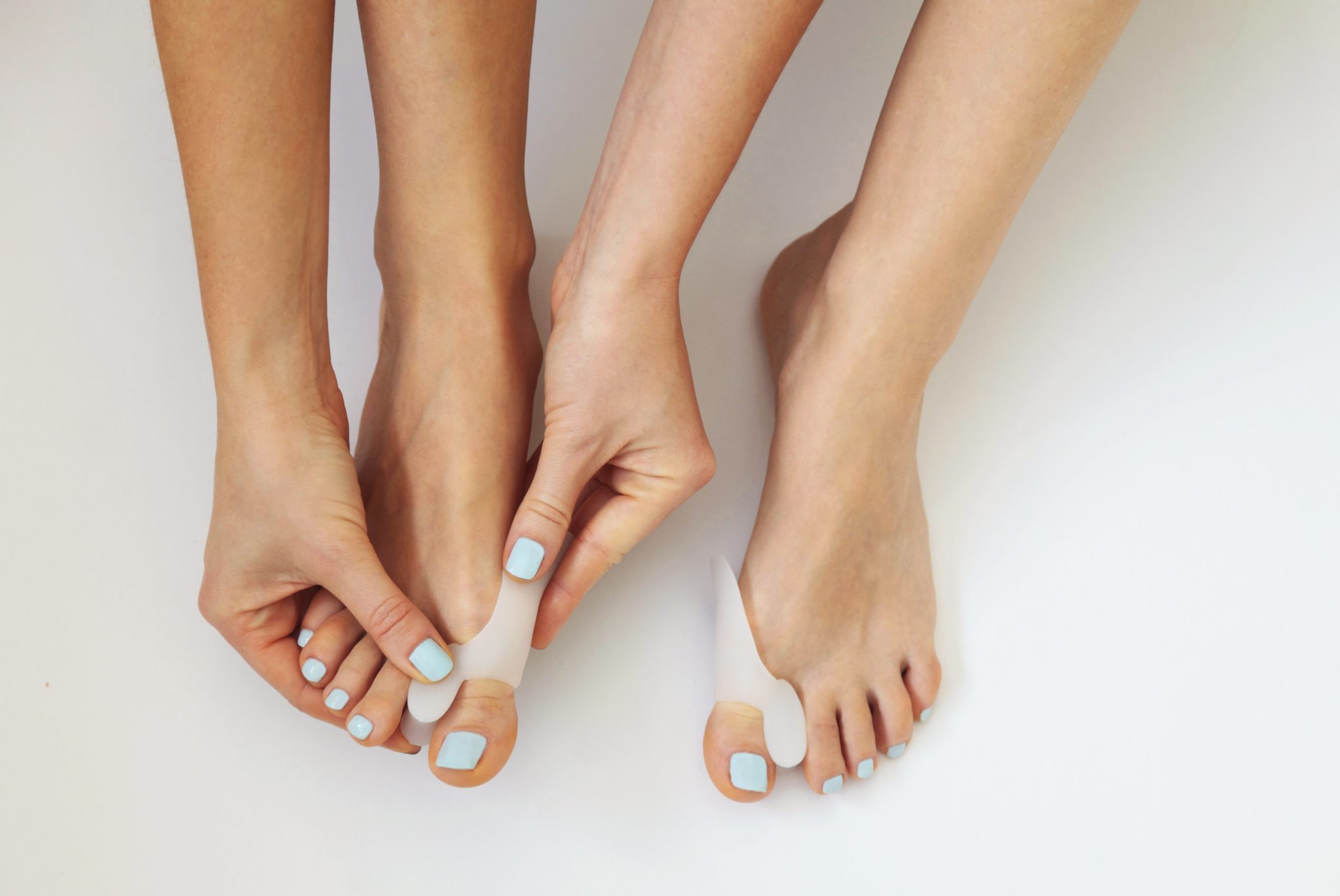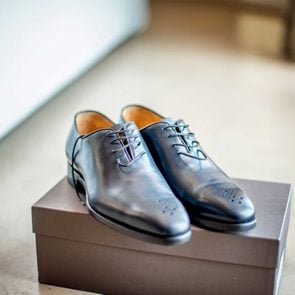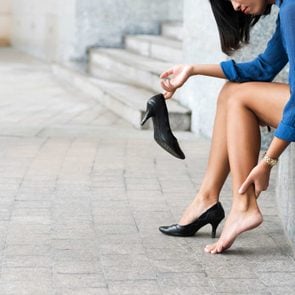Do Bunion Correctors Work?
Updated: May 14, 2021
These gadgets are designed to realign the big toe joint. But do bunion correctors work? Podiatrists weigh in on whether you'll find long-term relief. Plus, see their picks for the best bunion correctors.
Our editors and experts handpick every product we feature. We may earn a commission from your purchases.
Fighting bunion pain
If you have a bunion, you know how painful (and oftentimes debilitating) this foot condition can be. These bony bumps or deformities that form on the sides of the big toes can easily get in the way of many of your daily activities.
There are times you’ve probably fought through the pain. But there are lots of ways you can ease the ache, including using simple gadgets called bunion correctors. Here’s the scoop from podiatrists on whether they work and when and how to use them.
(Get six bunion pain relief tips from podiatrists.)
What is a bunion?
Officially known as hallux valgus, a bunion occurs when the big toe leans toward the second toe. The result: The big toe joint juts out. The misalignment leads to a bump, explains Pooja Shah, DPM, a New York City-based podiatrist and associate of the American College of Foot and Ankle Surgeons.
What causes a bunion?
While there’s no singular cause of bunions, research has found a definite genetic link. One study published in the journal Arthritis Care & Research, for instance, found that several foot disorders, including bunions, appear to be inherited. Because genetics plays such a big role in the development of bunions, there’s a good chance you’ll have bunions if either of your parents do.
(Learn more about 9 common foot problems and podiatrists’ simple solutions.)
Certain inherited factors, like a short Achilles tendon, short calf muscles, weak connective tissue, or a joint disease such as rheumatoid arthritis, can also increase your risk for bunions, according to a report from the National Center for Biotechnology Information.
“Bunions are also likely to be caused by the structure of your foot,” adds Dr. Shah. “Patients with a flat foot type are more prone to bunions due to the way the intrinsic muscles [those responsible for fine motor actions of the foot] are working to compensate while walking.”
And while poorly fitting shoes have received a lot of the blame in bunion formation, they’re less likely to be an underlying cause. Instead, experts think certain shoes (like those with narrow, pointed toes) may make bunions occur earlier or get worse faster.
(Check out the 10 best walking shoes for your feet, according to podiatrists.)
Bunion treatments
No matter the cause, the condition is unfortunately progressive in nature, meaning bunions get worse over time. While bunions are not detrimental to your health, they can be hard to treat and should be evaluated by a professional.
“Some bunions can be treated without surgery and with appropriate padding in the shoes, while others will need surgical correction to address the deformity,” says Dr. Shah.
You may get temporary relief using ice or medication to relieve pain and swelling. Better-fitting shoes or special insoles called orthotics can also help take pressure off your bunions. Some people even have luck with toe spacers and bunion correctors (more on that below).
But the only true “fix” for a bunion is surgery to properly realign the toe. Surgery isn’t guaranteed to work, and recovery is long and painful.
(Find out if YogaToes are your answer to foot pain.)

What are bunion correctors?
Another option for pain relief is a bunion corrector. These gadgets, available over the counter or via prescription from your doctor, help realign the big toe joint.
The products include tools like splints, pads, cushions, and toe spacers. They aim to move the big toe into a neutral position, and some provide padding around a bunion.
(These are the 14 ways podiatrists say you’re killing your feet.)
Do bunion correctors work?
“Bunion correctors can help in keeping the joint loose and limber and can even provide some temporary pain relief,” says Pedram Hendizadeh, DPM, a podiatrist and foot surgeon in Long Island. “Consistent use of some bunion correctors is thought to possibly slow down the progression of stiffness.”
Dr. Hendizadeh sometimes recommends bunion correctors to his patients to use as a conservative treatment for pain, or as postoperative treatment.
Keep in mind: A bunion corrector can only be helpful for a deformity that is flexible in nature and will not address the underlying issue that is causing the bunion in the first place. “For those who have an arthritic type of bunion, it may actually cause more pain to use the corrector since they already have limited motion in that joint,” Dr. Shah says.
Plus, Dr. Shah notes, the movement of the toe joint is only temporary: “Once the corrector is removed, the bunion will usually fall back into its original position.”
(Learn these health secrets your feet wish they could tell you.)
The best bunion correctors on the market
If you’d like to give a bunion corrector a try, here are the brands foot specialists say are worth purchasing.

ZenToes Bunion Protector
$10
These ZenToes bunion protectors are a great gel-based option for someone seeking a minimalist product that doesn’t take up significant room in the shoes, says Dr. Hendizadeh. Once on, they add cushioning and reduce rubbing, both of which lessen pain.
They’re also affordable—a pack of four costs only $10—and reusable. Just wash and reuse. They’re unisex, and one size fits most customers.
(Learn more ways to ease bunion pain without surgery.)

Corby Orthopedic Toe Bunion Corrector
$22
Another one of Dr. Hendizadeh’s favorites is the Corby Orthopedic Toe Bunion Corrector because it’s light, thin, and stretchy. Plus, it fits a wide variety of foot types.
The product realigns the toes while in use to relieve foot pain. “The gel toe spacer provides some excellent positioning of the joint,” he says. “Many similar products exist, and sometimes a patient may need to try several to find the ideal combination of fit and comfort.”

ZenToes Toe Separators
$10
New York City-based podiatrist Jacqueline Sutera, DPM, recommends ZenToes’ gel toe separator to her patients with mild to moderate bunions because it is far less bulky than competitive products for treating bunions. It works by realigning the big toe, which reduces pain.
“The silicone is very durable, washable, and reusable,” she says. “It can be worn, if comfortable, even while wearing shoes during the day or at night.” And at $10 for a four-pack, it’s an inexpensive option.
(Check out these reliable home remedies for calluses and corns.)

Povihome Bunion Cushion and Protector
$10
“This product is made of durable silicone, which is washable and reusable,” says Dr. Sutera. “In addition to the toe spacer, it also has a shield for the side of the toe joint that pads the area against shoes.”
The toe spacer moves the big toe into alignment, relieving pain while worn. Dr. Sutera suggests that people with mild or moderate bunions wear the gadget with shoes during the day or at night. At $10 for a pack of eight, this is a cost-effective treatment for bunion pain.

Vicorrect Bunion Corrector & Bunion Toe Separators
$23
This support brace is designed to minimize the discomfort and pain associated with bunions by realigning the big toe joint. It’s adjustable and can be used while resting, sitting, or sleeping. Dr. Sutera suggests using it to help with bunions that aren’t too severe.
(These are 10 common reasons you might have toe pain.)

Dr. Frederick’s Original Nighttime Bunion Splints
$15
This Dr. Frederick’s bunion splint is designed to be used through the night, which is one of the reasons why Dr. Sutera recommends it to her patients with mild to moderate bunions.
It is specifically designed to stay in place while you rest to realign the toe and ease the pressure placed on your bunion. It may also help reduce next-morning inflammation and pain.

ZenToes Bunion Corrector and Bunion Relief Sleeve with Gel Bunion Pads
$11
Dr. Shah doesn’t recommend splint-like devices to correct bunions. Instead, she suggests products with padding and coverings to help with bunion symptoms. One of those is a bunion pad. “With the addition of a compression sleeve, this padding can aid with some soft tissue swelling, which may occur from the constant rubbing of the bump in the shoe,” she says.
This product is lightweight enough to wear when you’re out and about, and it’s washable so you can reuse it.

















